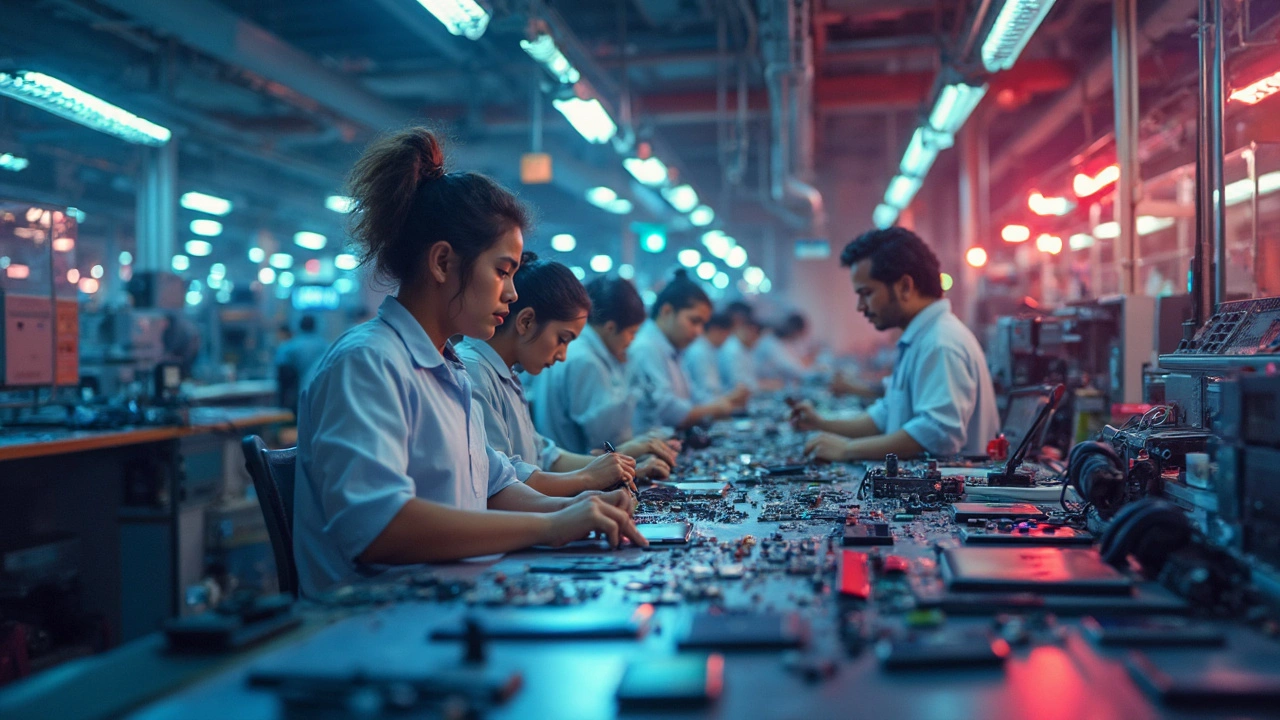China-India Trade: What Manufacturers Need to Know
If you run a factory or plan to start one, the flow of goods between China and India matters a lot. Both countries are huge, their markets overlap, and the trade lanes are getting busier every year. Understanding the basics can save you money, avoid delays, and open up new customers. Let’s break it down in plain terms.
Why the China‑India Trade Belt Matters
China still makes a lot of raw materials and components that Indian factories need – think steel, electronics, and plastic parts. At the same time, India exports finished goods, medicines, and textiles that find buyers in Chinese factories. This back‑and‑forth creates a reliable supply chain for both sides. When tariffs shift or ports get congested, the whole chain feels it, so staying aware of policy changes helps you plan ahead.
For example, a textile manufacturer in Gujarat might import synthetic fibers from Shanghai to keep costs low. If a new duty is announced, the price per kilogram could jump 10‑15 %. Knowing that ahead of time lets you negotiate better rates or look for alternative suppliers before the bill arrives.
Another practical angle is logistics. Shipping a container of furniture parts from Bangalore to Shenzhen usually takes 12‑14 days by sea. If you add a rail shortcut through Nepal, the transit drops to eight days and cuts fuel costs. Small changes like this can boost your delivery reliability, which matters when customers compare you to competitors.
Practical Steps to Leverage the Trade Flow
1. Map your critical inputs. List every component you buy from China and every product you sell to Chinese buyers. A simple spreadsheet can highlight which items are most sensitive to price swings.
2. Watch policy updates. Both governments publish monthly trade bulletins. Set up a Google alert for phrases like "China India tariff" or "Import duty India" so you’re not caught off guard.
3. Build a backup supplier network. If you rely on a single Chinese vendor for a key chip, find at least one alternative in Taiwan or South Korea. Having two options lets you negotiate better terms and reduces risk.
4. Use technology for tracking. Modern freight platforms show real‑time container locations. Integrate that data with your inventory system to know exactly when stock will arrive, and adjust production schedules accordingly.
5. Consider value‑added services. Some Indian firms are adding assembly or testing steps to Chinese parts before shipping them back. This can raise the final product’s price while keeping the cost of raw inputs low.
6. Stay compliant. Both countries have strict rules on chemicals, additives, and safety standards. For instance, certain banned chemicals in India (like specific phthalates) can stop a shipment at customs. Keep a checklist of prohibited items for each market.
7. Leverage government schemes. India’s "Make in India" program offers subsidies for setting up new production lines that use imported machinery. Check the latest eligibility criteria and apply early.
By following these steps, you turn a complex trade route into a competitive advantage. You’ll know where costs can be trimmed, which risks to watch, and how to speed up delivery – all without needing a fancy degree in economics.
Remember, the China‑India trade relationship isn’t static. New rail projects, port upgrades, and policy tweaks happen regularly. Treat the trade map as a living document, update it monthly, and you’ll stay ahead of the curve. Your factory, your products, and your bottom line will thank you.
China's Top Export to the US: Electronics and How India Fits In
China dominates US imports of electronic goods, which include smartphones, computers, and other devices. Its strong manufacturing infrastructure, cost efficiency, and vast production capacities drive this trend. However, India's electronics sector is emerging as a potential competitor, thanks to government initiatives and skilled labor. Understanding these dynamics can unveil opportunities for businesses looking to tap into these markets.
Read More




